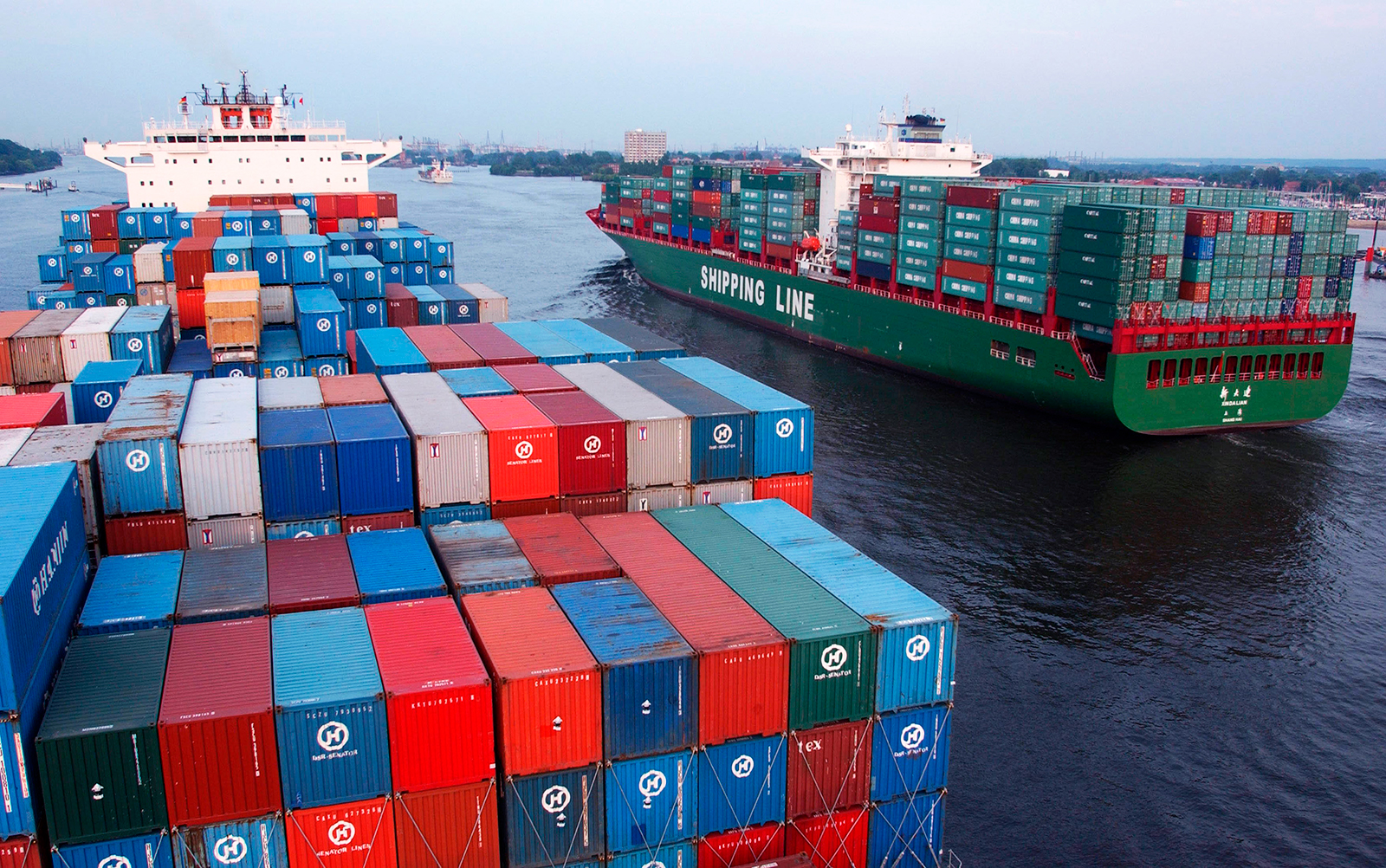What Do Post-COVID Supply Chains Look Like?

Container ships from China passing at Blankenese on the Elbe, Germany. In the short to medium term, the impact of COVID-19 is not going away, meaning sharp rises in shipping and air freight costs.
Photo: plus49/Construction Photography/Avalon/Getty Images
Across the world, companies have been celebrating the return of more normal activity, more reliable supply chains and a boost from renewed consumer confidence. And that’s where they are going wrong.
A year ago, I described how the pandemic was changing supply chains in unexpected ways, and if a business’s supply chains have remained the same as they were before the pandemic, then it is going to have problems. Retail is just one immediate example. Post-lockdown sales might be sharply up, but profits remain down because the cost to serve is so much higher for online sales and delivery models. Businesses in all sectors need to move forward to a new normal for supply chains. Perhaps it can be a “new better.”
Cost to Serve Is Higher
A year on from the first waves of shocks, global supply chains are working in a fast and furious fashion. Working, but volatile — subject to local uncertainties and the potential for a difficult accumulation of disruption.
In the short to medium term, the impact of the COVID-19 pandemic is not going away, which means a changing picture of lockdowns and restrictions in different parts of the globe. Overall, that has meant sharp rises in shipping and air freight costs. And, in general, lead times for supply chains have needed to be extended.
The knock-on effect of this has been a need for more containers, more containers not moving and capacity being fully taken up — so, containers end up in the wrong places around the global supply chains system. It’s like supermarket trolleys. If processes to take trolleys back to the front of the store aren’t working, then they’re going to end up scattered all around the extremities of the car park.
Bottled Up Consumer Spending
Supply chain disruptions and shortages are continuing to happen because of the dramatic upturn in economies, a release of bottled-up consumer spending.
The microchip shortages in some sectors are also being exacerbated by parallel interactions, where there is increased competition from across different sectors competing for supplies, especially with the accelerated shift to computerization and autonomous systems in everything from the workplace to transport systems.
A question mark also remains over whether the surge in demand for products is real or just a bubble of stockpiling as businesses fill their stock rooms to pre-empt recovery. The danger is that customer demand doesn’t or won’t exist on the same scale and we enter a boom-and-bust cycle.
The pandemic crisis of 2020-21 has brought permanent, structural changes to supply chains. There is no return to 2019, and businesses need to take on board the lessons of the past 18 months and find the best blend of old and new.
Cost and value will always be fundamental, but resilience has to be the priority for protecting company survival for the longer-term.
Shorter, More Localized Supply Chains
We have seen how those supply chain managers with the strongest network of relationships have coped better. Businesses tend to focus effectively on the basic management of inventories, KPIs, information systems and people — but appear to think relationships happen by accident. Collaboration and proactively managed relationships are the key to future resilience.
Businesses have seen the need for shorter, more localized supply chains. Supplies of some high-demand raw materials, like cobalt and lithium, can only come from specific regions — nothing can change that situation — but there can be more near-shoring and on-shoring. There is also the need for multi-shoring, not basic multi-sourcing, which caught out some operations during lockdown that had arranged multiple different supply sources in the same region, all affected by COVID-19 transport restrictions.
The crisis has demonstrated the need for transparency: continuous monitoring and intelligence, real-time information across networks in order to anticipate and understand the impact of volatility and better deal with the complexity involved. Events like the blockage of the Suez Canal earlier this year had a heightened impact because it was a case of disruption on disruption.
The Need for a Strong Culture
A strong culture has been critical for ensuring there’s the necessary agility and flexibility in a supply chain operation. By ‘culture’ I mean what happens when people are left without instruction and under pressure? What do they do? Can they work together to find solutions?
People have been shown to be the most vulnerable element in an organization, adding to the momentum toward Robot Process Automation. This could both increase resilience within operations (not having to rely on the presence and movements of human employees) but also take the repetition out of human work roles.
There needs to be a working trade-off between property assets, information systems and HR. Organizations may no longer need physical offices to the same extent as a result of automation and remote working, but they need to invest into more than just new information systems. There has to be renewed attention and investment into HR and the management and leadership of dispersed workforces, all the processes that need to be re-engineered for a virtual world of work. The growing reliance on digitization and connectivity also means a new intensity of focus on cybersecurity.
A ‘New Better’?
What companies and consumers value has changed. Lockdowns have moved a much larger proportion of the consumer population — including older demographics — over to the ease of online shopping. In other words, people have got used to shopping differently, and that means that whole supply chain processes, networks, information systems and organizations have to change.
Ultimately the lesson has been the need to procure for resilience and not solely cost. Cost and value will always be fundamental, but resilience has to be the priority for protecting company survival for the longer-term.
A new better for supply chains will bring some major changes for wider societies.
There will be benefits from more automation, digital systems and on-shoring, including higher quality jobs, the potential for more diversity in the workforce, a reduced transport footprint for the environment and less plastic waste. But at the same time, there will be challenges, including the need for new business models to ensure viability and maintaining the engagement and motivation of supply chain workers. The biggest barrier, though, will be complacency around the “return to normal.”








